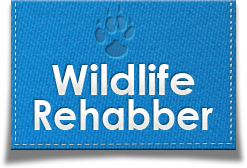Bird Houses And Bird Feeders
Bird houses and feeders are a great way to attract wild birds to your property. The houses provide cavity nesting birds an opportunity to nest in areas that may not have as many natural nesting options, especially in residential and heavily developed locations. Some birds have very unique nesting requirements, such as the size of the box as well as height off the ground. Other birds are a little less finicky. The size of the opening of the bird house, as well as the house interior size, usually determines what type of bird might inhabit the box.
Nest box placement is important, because each bird species has specific preferences in height and location. However, most birds prefer that the opening to their nest box be south or southeast facing.
Window Bird Houses
These bird houses are designed to be affixed to your window and have a clear back to allow you to see the nesting activity. You’ll probably attract wrens, finches, and maybe chickadees with these types of houses. The downside to these houses is that the birds will be disturbed by any human activity that they can see. To avoid this, select houses that provide double-sided mirror film on the clear portion of the box so that you can see the birds but they can’t see you.
Wren Bird Houses
These bird houses are specifically designed to attract wrens, but can also be appealing to chickadees and other small birds. Wrens like to hide their nests in brush 3 to 10 feet off the ground. The opening should be about 1 1/2″ around. Place their house near bushes or on dense trees at least 3 feet off the ground.
Purple Martin Houses
Like many birds, Purple Martins are great at eating mosquitos. To encourage them to nest on your property, be sure to place their house in a broad open area where there are no trees or other buildings within 40 feet of their house. They need the open space in order to forage for flying insects. The opening to martin houses should be wide enough to allow entry/exit but modified to keep starlings out.
A 3 inch crescent shaped opening is good for excluding starlings. If you have a martin house with standard 2 1/8″ openings, buy the special crescent adapters which modify the openings to keep starlings out.
Duck Houses/Boxes
Duck houses provide tree cavity nesting ducks with a safe place to nest. These boxes are usually 3′ x 4′ in size and have a ramp on the inside which the ducklings can use to emerge. It’s recommended that the houses be lined with 3-4″ of wood shavings. The house should be secured to a pole in the water about 3′ above the high water line. If you’ll be installing the box on land, it should be within 100 feet of water, at least 6 feet off the ground, and it must have some type of predator guard.
Bluebird Houses
Bluebird’s prefer to nest in cavities 3 to 6 feet off the ground in open fields, near where they prefer to forage. They also prefer to space their nests 300′ feet from other bluebirds.
Owl Nest Boxes
Cavity-nesting owls prefer their boxes to be placed at least 10 feet off the ground. It’s recommended that you place a few inches of wood shavings inside the box. Placing a nest box underneath a branch will also help attract owls. They can use the overhead branch to keep watch.
Woodpecker Houses
Although woodpeckers are pretty good at excavating their own nests, providing a nest box is important especially in developed areas where competition for nesting space is high due to reduced habitat.
